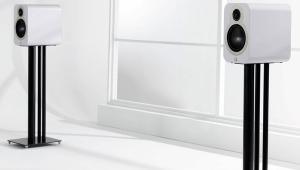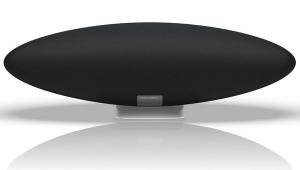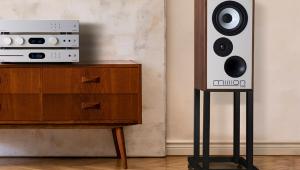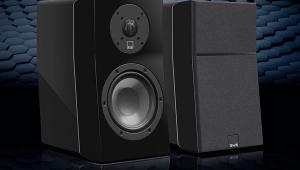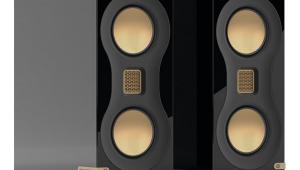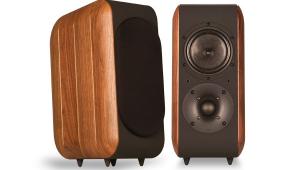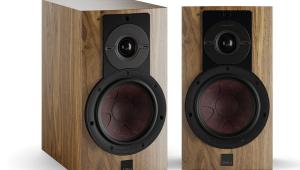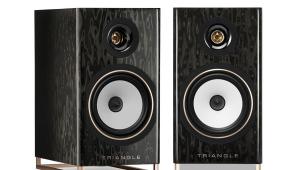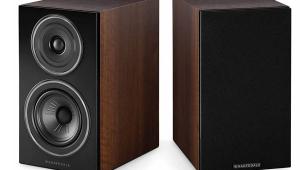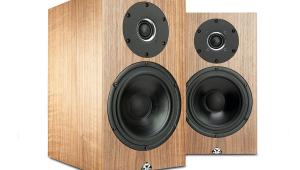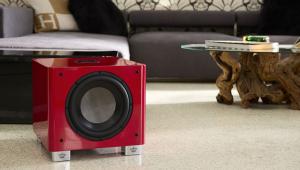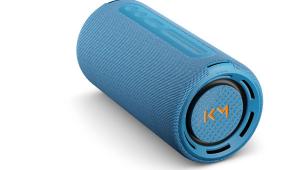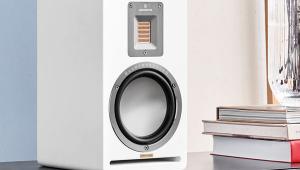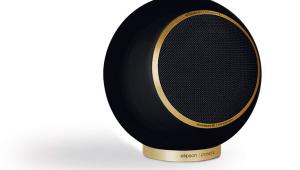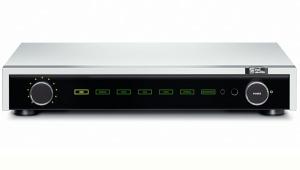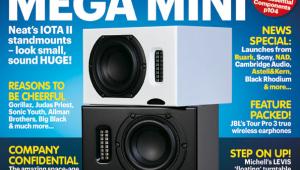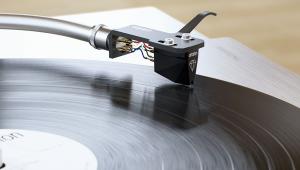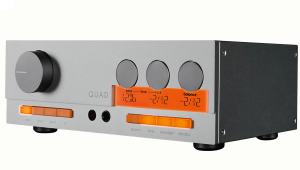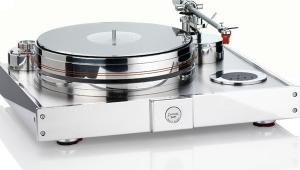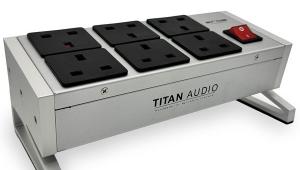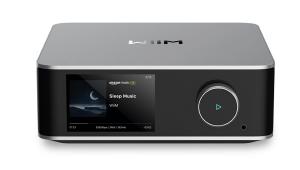Russell K Red 120
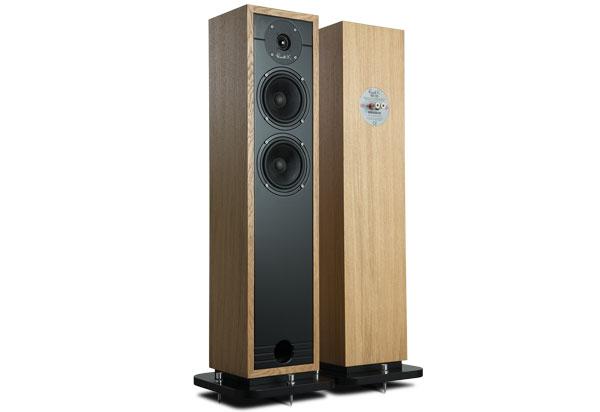
 High-performance speaker design has more than its fair share of boffins, visionaries and finite element analysis programmes. Smaller operations can’t compete on level terms and so must run a bit faster and make niche thinking work. USPs aren’t just desirable but vital. But even in this quirky, alternative, leftfield arena, Russell Kauffman’s story is remarkable.
High-performance speaker design has more than its fair share of boffins, visionaries and finite element analysis programmes. Smaller operations can’t compete on level terms and so must run a bit faster and make niche thinking work. USPs aren’t just desirable but vital. But even in this quirky, alternative, leftfield arena, Russell Kauffman’s story is remarkable.
Since its start in 2014, his brand’s modest catalogue has been confined to the Red 100 and 50 standmounts and flagship 150 floorstander. These are now joined by the shorter, slimmer Red 120 before you.
Kauffman never set out to become a loudspeaker maker but, over many years working for the likes of Bowers & Wilkins and Morel, he wasn’t just paying close attention but made invaluable contacts, listened to and assessed thousands of speakers and finally came to the conclusion that he could do better.
Hard to disagree when the Red 50 romped to victory in our Group Test of up-market standmounts (HFC 422). Although the company’s smallest and simplest design, it encapsulated the Kauffman method which, for traditionalists, seems deeply counter intuitive. Instead of regarding a speaker cabinet chiefly as a necessary inconvenience to house the drive units – beset by unwanted contributions that have to be corrected or eliminated, usually by trying to make it as inert as possible – Kauffman contended that the box could complete the sonic profile of the system, synergistically singing along with the drivers, starting and stopping precisely when they do.
Not just any box, of course. Most dynamic speaker designs use thick, sometimes curved panels and heavy internal damping to absorb energy radiated from the rear of the drive units and reduce cabinet colouration. According to Kauffman, damping slows down the sound and makes it out of synch with the forward output of the driver. So fluffy wadding is a no-no. Instead, a thin-walled cabinet flexes, vibrates and breathes in time with the main driver, working in harmony with it rather than against it and shedding distortion as a result. In the Red 50, a single bracing shelf with multiple apertures mounted just above the 127mm doped paper mid/bass driver is used to control cabinet flex while a minimalist 12dB roll-off crossover network and rear-firing bass reflex port tuned to 55Hz also contribute towards the integration of the drivers and cabinet dynamics.
The Red 120 is effectively a 2.5-way floorstanding version of the Red 50 with an extra driver assigned to the lower octaves and a forward-firing bass reflex port. It’s a little wider than it is deep and, unless you order the optional magnetically attached grilles, has a functional aesthetic with the exposed drivers set into a black baffle. The top section is identical to the entry-level standmount. So is the Red 120 merely a 50 with an extra driver, more cabinet volume and deeper bass?
Not that simple. As you’d expect, there are more bracing shelves with holes in – one beneath each of the drivers. Each shelf has a different number of ‘acoustically tuned’ holes to confine the midrange to a dedicated section of the cabinet – forming a damping brake at around 100Hz – while allowing the rest of the system to breathe and relax when delivering the lower bass notes. Helping facilitate this is a vertical tube that passes through a fourth bracing shelf just above the reflex port that vents into a small chamber containing a second reflex port tuned as a system to 24Hz.
The integral plinth looks good and incorporates a novel levelling system where, instead of being located at the corners, the big bore pass-through threads for the very substantial spikes are at the mid-points of each side, making precise levelling a breeze, especially as adjustments are made topside of the plinth. Good quality single binding posts are positioned fairly high on the back baffle, which keeps the internal wiring paths short.
Sound quality
The Red 120 doesn’t immediately shout ‘fast’ like its remarkably sprightly standmount sibling. I suspect the perceived difference is largely illusory as the 50 doesn’t carry the burden of low bass. I play Trip-Trap from Marcus Miller’s Laid Black album and, being a live track in a large venue, there’s a lot of low-frequency ambient energy generated by Miller’s Fender Jazz Bass and the escalating ‘dirty’ distortion effects from the desk that the Red 50 barely hints at but the Red 120 captures tellingly.
Never underestimate the small matter of a wider bandwidth. Its impact on scale and believability can be huge. Nor is it just that the 120 reaches much lower with greater weight than the 50. What’s so special is its wonderfully supple, articulate and tuneful delivery – a great match for the estimable timing chops of the Chord Electronics Hugo 2 DAC (HFC 428) I’m using, itself a glove fit with the Hegel H120 (HFC 460), an integrated that squares real-world speaker control with fabulous finesse.
The Red 120 has no obvious single ‘character hook’, then. The things that strike me are natural flow, tonal temperance, top-to-bottom unity and effortless rhythmic coherence. There’s no manipulative smoothness or ramped-up warmth here. Up-tempo tunes have a vivacity and veracity no amount of artful hype can pull off. It’s unmistakable. Stevie Wonder’s harmonica break on Big Brother stuns in its immediacy, attack and verve, Steve Laury’s super-chilled jazz fusion stylings on Keepin’ The Faith have a fluency, natural timbre and relaxed gait it’s hard not to get swept up in.
An old fave from John Mayer, Stitched Up motors along with oodles of attitude and funk to showcase the Red 120’s best moves: bass definition and texture, dynamic reach, perfectly judged midrange presence, superb vocal intelligibility and, again, that glorious trinity of speed, grip and transparency. Treble that sparkles and bass so heavy it makes you feel queasy might be missing from the repertoire, but then bombastic, demo-room hi-fi crowd pleasing simply isn’t on its agenda. This isn’t a speaker for everyone, but if you’re interested in having your neck tingled by the passion, emotion and musicianship on a recording, I’m struggling to think of anything at the price that’s as convincing.
Conclusion
More than an obvious upgrade for a Red 50 on a stand, the Red 120 demands serious consideration for anyone with £3k to spend on a speaker. Whatever you think about Russell Kauffman’s undamped methodology, the results speak for themselves and, from where I’m sitting, they’re very good indeed. Recommended. DV
DETAILS
Product: Russell K Red 120
Price: From £3,000
Origin: UK/Poland
Type: 2.5-way floorstanding loudspeaker
Weight: 16kg
Dimensions: (WxHxD) 200 x 910 x 190mm
FEATURES
● 1x 25mm soft dome tweeter
● 2x 127mm doped paper mid/bass driverse
● Quoted sensitivity: 86dB/1W/1m
 |
Inside this month's issue:
Ruark R610 music system and Sabre-R standmount speakers, PMC twenty.23i Active, floorstanders, English Acoustics Downton preamplifier, Bluesound NODE ICON preamp/streamer, Ortofon Concorde Music Blue MM cartridge and much, much more
|
